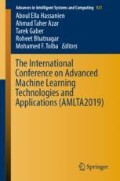Abstract
The traveling salesman problem (TSP) is a challenging problem in combinatorial optimization. No general method of solution is known, and the problem is NP-hard. In this paper, we consider the multi-objective TSP which encompasses the optimization of two conflicting and competing objectives: here the dual minimization of the total travel distance and total travel time at various traffic flow conditions. It is well known that travellers can experience extra travel time during peak hours (i.e., congestion conditions) compared to free flow conditions (i.e., un-congested conditions), therefore and under some conditions, minimizing traveled time could conflict and compete with travel distance and vice versa. This problem has been studied in the form of a single objective problem, where either the two objectives have been combined in a single objective function or one of the objectives has been treated as a constraint. The purpose of this paper is to find a set of non-dominated solutions (i.e., the sequence of cities) using the notion of Pareto optimality where none of the objective functions can be improved in value without degrading one or more of the other objective values. The traveller then has the chance to choose a solution that fits his/her needs at each congestion level. In this paper, a multi-objective genetic algorithm (MOGA) for searching for efficient solutions is investigated. Here, an initial population composed of an approximation to the extreme supported efficient solutions is generated. A Pareto local search is then applied to all solutions of the initial population. The method is applied to a simulated problem and to a real-world problem where distances and real estimates of the travel duration for multiple origins and destinations for specific transport modes are obtained from Google Maps Platform using a Google Distance Matrix API. Results show that solving a TSP as a multi-objective optimization problem can provide more realistic solutions. The proposed approach can be used for recommending routes based on variable duration matrix and cost.
Access this chapter
Tax calculation will be finalised at checkout
Purchases are for personal use only
References
Lin, S.: Computer solutions of the traveling salesman problem. Bell Labs Tech. J. 44(10), 2245–2269 (1965)
Jozefowiez, N., Glover, F., Laguna, M.: Multi-objective meta-heuristics for the traveling salesman problem with profits. J. Math. Model. Algorithms 7(2), 177–195 (2008)
Weisstein, E.W.: Traveling salesman problem. Mathworld-a wolfram web resources (2010). http://mathworld.wolfram.com/TravelingSalemanProblem.html
Holland, J.H.: Adaptation in Natural and Artificial Systems. University of Michigan Press, Ann Arbor (1975)
Shi, L., Li, Z.: An improved pareto genetic algorithm for multi-objective TSP. In: The Proceeding of International Conference Fifth International Conference on Natural Computation, Tianjin, pp. 585–588 (2009)
Whitley, D., Yoo, N.W.: Modeling simple genetic algorithms for permutation problems. In: FOGA, vol. 1994, pp. 163–184 (1994)
Abdullah, K., David, W.C., Alice, E.S.: Multi-objective optimization using genetic algorithms: a tutorial. Reliab. Eng. Syst. Safety Spec. Issue - Genet. Algorithms Reliab. 91(9), 992–1007 (2006)
Author information
Authors and Affiliations
Corresponding author
Editor information
Editors and Affiliations
Rights and permissions
Copyright information
© 2020 Springer Nature Switzerland AG
About this paper
Cite this paper
Hameed, I.A. (2020). Multi-objective Solution of Traveling Salesman Problem with Time. In: Hassanien, A., Azar, A., Gaber, T., Bhatnagar, R., F. Tolba, M. (eds) The International Conference on Advanced Machine Learning Technologies and Applications (AMLTA2019). AMLTA 2019. Advances in Intelligent Systems and Computing, vol 921. Springer, Cham. https://doi.org/10.1007/978-3-030-14118-9_13
Download citation
DOI: https://doi.org/10.1007/978-3-030-14118-9_13
Published:
Publisher Name: Springer, Cham
Print ISBN: 978-3-030-14117-2
Online ISBN: 978-3-030-14118-9
eBook Packages: Intelligent Technologies and RoboticsIntelligent Technologies and Robotics (R0)

